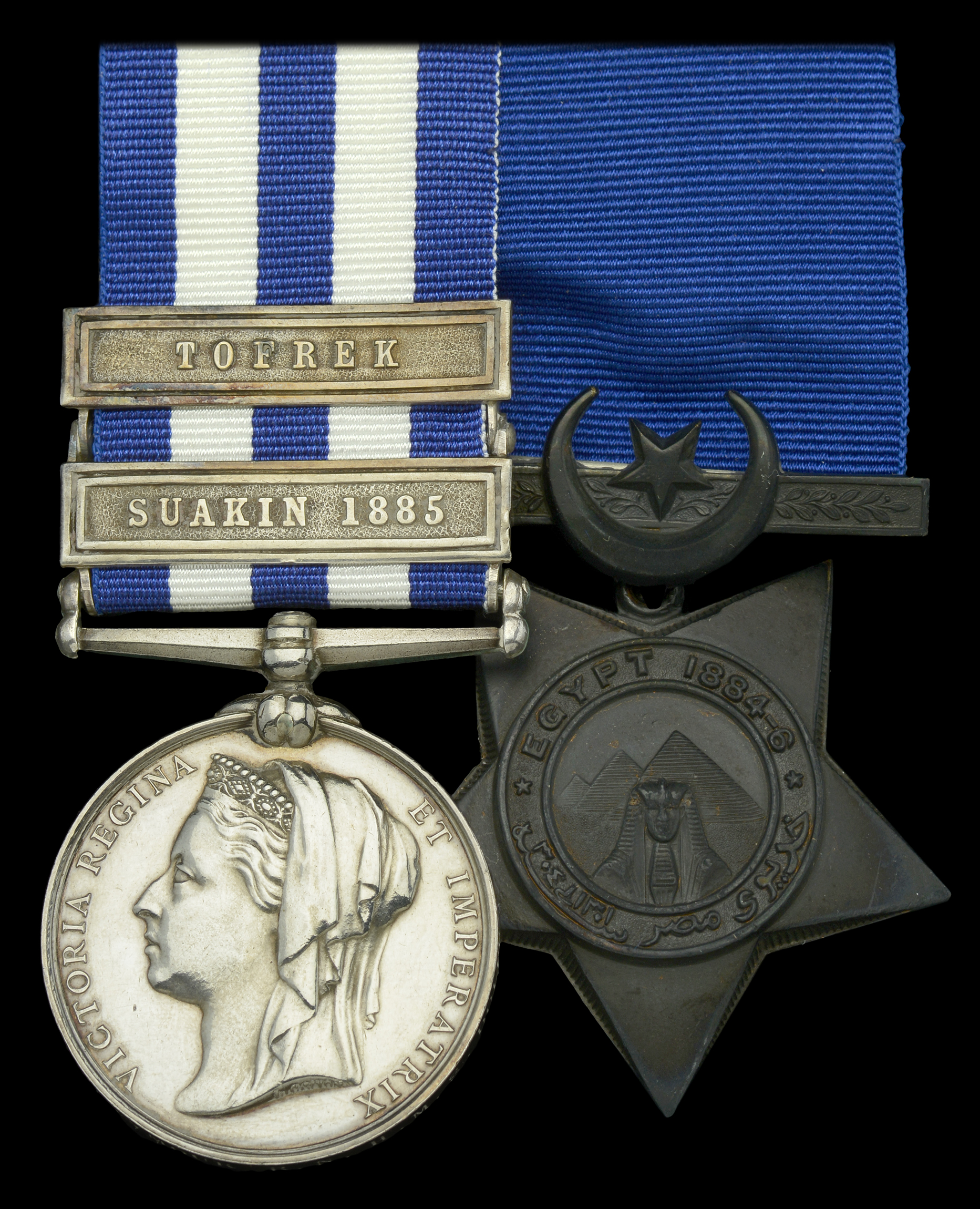The Soudan campaign pair awarded to Lieutenant M. H. M. Seymour, Royal Navy, who was killed in action at the battle of Tofrek on 23 March 1885 Egypt and Sudan 1882-89, undated reverse, 2 clasps, Suakin 1885, Tofrek (Lieut. M. H. Seymour R.N. H.M.S. Dolphin.) impressed naming; Khedive’s Star, dated 1884-6, extremely fine (2) £6,000-£8,000 --- Importation Duty This lot is subject to importation duty of 5% on the hammer price unless exported outside the UK --- --- Montague Hamilton March Gruggen (changed to Seymour in 1876) was born in Chichester, Sussex, on 29 September 1854, and entered the Royal Navy as a Cadet in Britannia in January 1868. Appointed a Midshipman in January 1870, he enjoyed varied service over the coming decade and was advanced to Sub. Lieutenant in July 1874 and to Lieutenant in August 1878. Having then attended torpedo and gunnery courses, and continued his studies at the R.N.C. Greenwich, he was appointed to H.M.S. Dolphin for services in Egypt and the Sudan. Seymour was subsequently selected as a member of the Royal Marine Battalion assigned to Sir John McNeill’s column for the advance on Tamaai; a vast, unwieldy column with some 1,500 baggage animals, its progress was slowed by the harsh terrain and thick bush. On 23 March the force halted at Tofrek, about six miles from Suakin, and work was commenced in constructing a three-square defensive zeriba. Command of one of the redoubts, protecting the square entrusted to the Royal Berkshire Regiment, was given to Seymour. However, as work was still proceeding, a report was received of ‘the enemy collecting to the front’, swiftly followed by another with news that they were ‘advancing rapidly’. Sir John McNeill immediately gave orders to call in the working parties and in the next instant the cavalry came galloping in and, close behind them, a howling mob of 5,000 Hadendoa tribesmen. The working party of the Berkshire Regiment rushed back into their zeriba, and stood to their arms, moments before for the main thrust of the enemy’s attack fell upon their position. Swarming over the low bush fence and unfinished sandbag parapet at the south-west salient, the Hadendoa set about the defenders with their long razor sharp swords, and it was in the course of this determined assault that Seymour and five of his bluejackets, who had charge of the Gardner guns, were overrun and killed, and two of his sailors wounded; the Gardner guns were in the process of being placed in position at the time of the attack, and jammed after firing only a few rounds. The battle lasted just 20 minutes but was marked for its acts of bravery and the fanatical devotion of the Hadendoa. As the smoke and dust cleared away, a shambles of bodies of men and animals was revealed. The British lost seven officers and 63 men killed, and six officers and 89 men wounded. And there were 80 casualties amongst the Indian infantry along with 150 civilian camel drivers and 750 transport animals killed or maimed. Added to which at least 1,500 of the Hadendoa tribesmen suffered death or wounds around and within the zeribas. Sold with copied record of service and other research.
Auctioneer's Buyers Premium: 24% (+VAT)
There is an additional charge of 4.95% (+VAT/sales tax)
See Full Terms And Conditions





